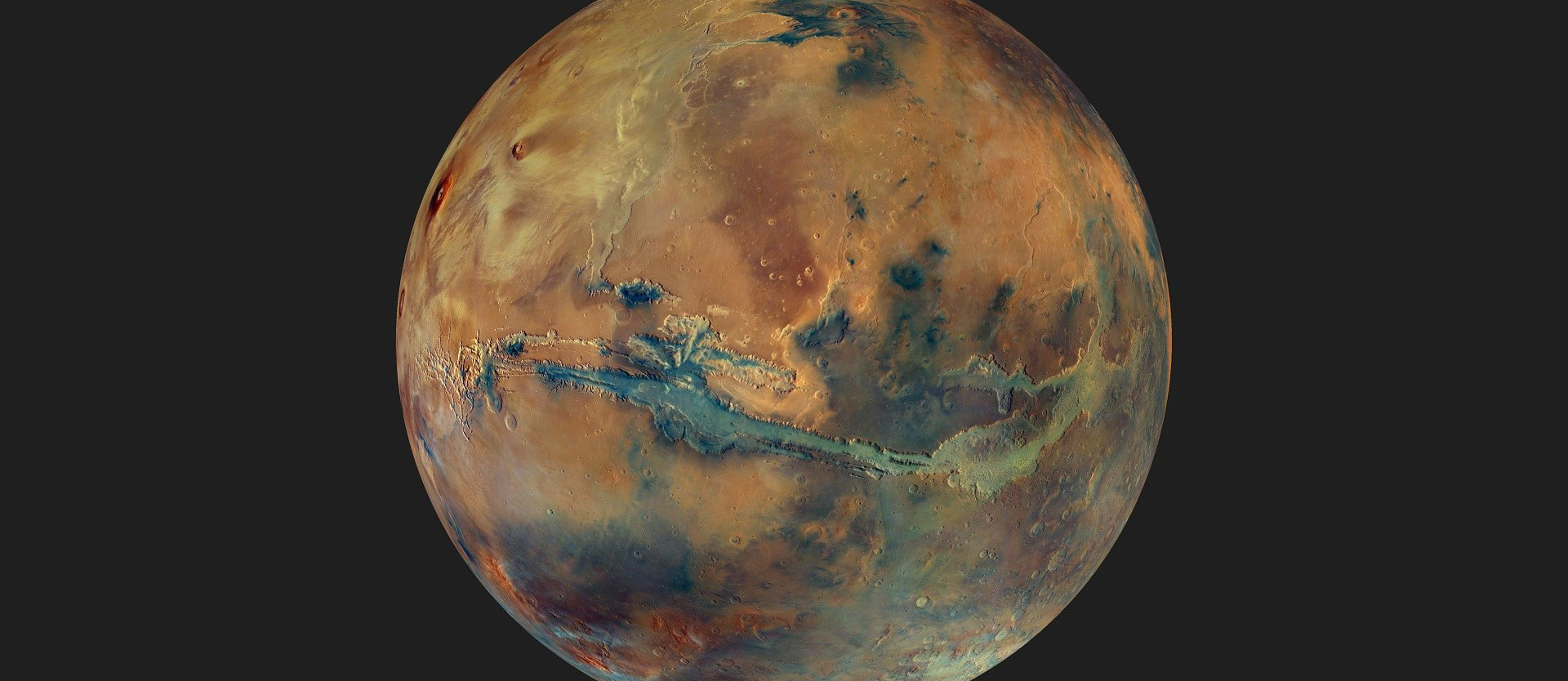
Global color mosaic

The researchers have now used this to create a global color mosaic of Mars from 90 individual images that is unparalleled in its accuracy of color information. The image provides insight into the diverse composition of rocks, sands and dust on the Martian surface.
Most of the Martian surface is reddish in color, due to the high amount of oxidized iron in the dust on the surface. But it is also immediately noticeable that part of Mars is rather bluish, colored. These are grayish-black-blue-black sands, which are of volcanic origin and form dark layers of sand on Mars, but above all have been piled up by the wind to form imposing sand dunes or huge fields of dunes on the floor of impact craters. These sands consist of basaltic minerals, of which volcanic lava on Earth is also composed. Basalt is the most widespread volcanic rock on Earth - and throughout the solar system. The entire ocean floors on Earth are made of basalt, but so are the extinct volcanoes of the Eifel, Mount Etna in Sicily or the Hawaiian volcanoes.









